COLUMN: SCIENCE FOR FORMULATORS
Long-chain amphoteric surfactants as safe, effective additives for cleansing formulations
KEYWORDS —
surfactants,
amphoteric,
cleansing,
long chain amphoterics,
alkanolamide.
amine oxide.
viscosity modification.
irritation.
Abstract
Amphoteric surfactants are likely the least understood, yet most commonly used class of surfactants in personal care. Their benefits in formulation are well known, but only a subset of these products have been very well characterized. The coconut derived products are ubiquitous in personal care, but their longer chain and soft-oil derived counterparts are not. This article will demonstrate the benefits of using these long chain products.
“
“A study in healthy women providing probiotic yogurt for four weeks showed an improvement in emotional responses as measured by brain scans”
Introduction
The foundation of surfactant science is the physical chemistry of surfactants at surfaces. The ability of a molecule to remain clear in a solvent, but at the same time go to and alter the air-liquid interfacial surface tension is the key to surfactant efficiency. In order to get foam, emulsification, wetting, or conditioning, one must have as a prerequisite a lowering of surface tension. In other words, all surfactants lower surface tension but the structure of the surfactant determines if it will provide foam, emulsification, wetting, or conditioning. Surface tension of a liquid is a result of internal attractive forces. These forces cause the liquid’s surface to act as if it were a stretched elastic membrane, thus causing it to form spherical droplets.
Amphoteric surfactants have two or more different groups in the same molecule that in pure form are insoluble in each other. In most cases they are oil and water groups. Each group in pure form has a surface tension associated with the predominant moiety present. The surface tension is determined by the surface tension of the group that is found at the interface. The groups are shown in Table 1.
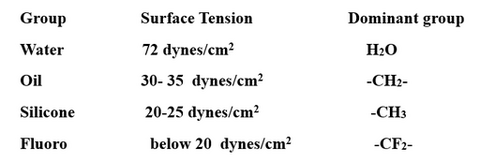
Table 1. Surface Tension.
The amphoteric surfactants we studied for this article have long organic chains. As will become clear, the long chain surfactants are amphoteric and have different properties that the more commonly studied C12 chains.
Broadly used to describe a wide range of multi-charged molecules, “amphoteric” surfactants are often simply zwitterionic or have some capacity of carrying multiple charged functional groups. This property makes them tremendously useful in the formulation of a wide range of cleansers, especially gels, but their charge characteristics also make them useful for other applications as well. They are well known for their ability to form mixed micelles with anionic surfactants, substantially lowering the irritation potential of those surfactants while greatly improving foam and viscosity building properties. Formulators are most familiar with the coconut-derived products, such as Cocamidopropyl Betaine, Cocamidopropyl Hydroxysultaine, Disodium Cocoamphoacetate (a true amphoteric), and the like. While the coconut derived products are excellent foaming products on their own and are often used alone for this property, analogous products derived from soybean and other oils high in stearic, oleic, and linoleic acids do not demonstrate this same property and have been largely ignored. As formulators move away from many traditional tertiary surfactants, especially those containing secondary amines and ethoxylates, it is increasingly important that alternative chemistries be considered for similar benefits.
Materials
All surfactants used in this evaluation were supplied by Colonial Chemical, Inc, South Pittsburg, TN. The amphoteric products of interest are described in Table 2.
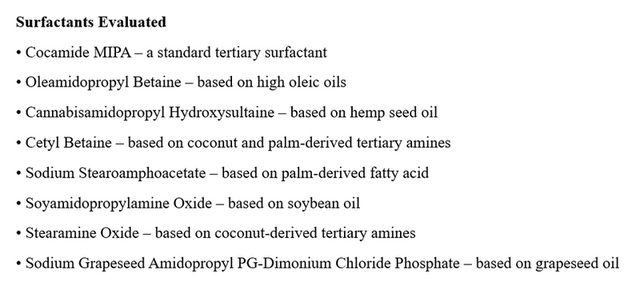
Table 2.
The Limitations and Cautions of AI
Of course, AIs are not perfect yet. And while they offer numerous advantages, it is not without its problems. You should be aware of the following whenever you use an AI assistant.
AI Hallucinations - AI can often provide inaccurate or misleading information. It is trained on information from the Internet. And often, the Internet is just wrong. So, if you are trying to use it to learn new concepts, just realize some of the information it tells you is incorrect. Always double check facts. I would note that while this is a significant drawback in using AI, a similar thing happens when learning from people. Individuals can present misinformation as fact just as readily as an AI.
Data Privacy - AI tools use your data when responding to other users. Therefore, sensitive company information should not be shared with them. ChatGPT and other AI products don't keep secrets!
Mathematical Limitations - The way that AI chatbot works is through a Large Language Model. And as such, they don't really know what they are answering. They just give you a good prediction of what word should come after another. This means that it is not reliable for complex mathematical calculations.

The Limitations and Cautions of AI
Of course, AIs are not perfect yet. And while they offer numerous advantages, it is not without its problems. You should be aware of the following whenever you use an AI assistant.
AI Hallucinations - AI can often provide inaccurate or misleading information. It is trained on information from the Internet. And often, the Internet is just wrong. So, if you are trying to use it to learn new concepts, just realize some of the information it tells you is incorrect. Always double check facts. I would note that while this is a significant drawback in using AI, a similar thing happens when learning from people. Individuals can present misinformation as fact just as readily as an AI.
Data Privacy - AI tools use your data when responding to other users. Therefore, sensitive company information should not be shared with them. ChatGPT and other AI products don't keep secrets!
Mathematical Limitations - The way that AI chatbot works is through a Large Language Model. And as such, they don't really know what they are answering. They just give you a good prediction of what word should come after another. This means that it is not reliable for complex mathematical calculations.
Methodology
A. Viscosity Development
Longer chain surfactants are known to exhibit a much greater ability to generate viscosity in solution. The impact on viscosity development of the long chain amphoterics was compared. A standardized base surfactant formulation consisting of Sodium C14-16 Olefin Sulfonate and Cocamidopropyl Hydroxysultaine was evaluated in combination with the tertiary additives listed previously according to Formulation 1.
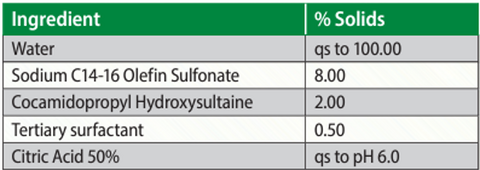
Formulation 1.
Standard salt-response curves were generated by measuring solution viscosity with a Brookfield LVT viscometer after incremental additions of sodium chloride are shown in Table 3. Samples were centrifuged to remove air and temperature adjusted to 25°C prior to each measurement.
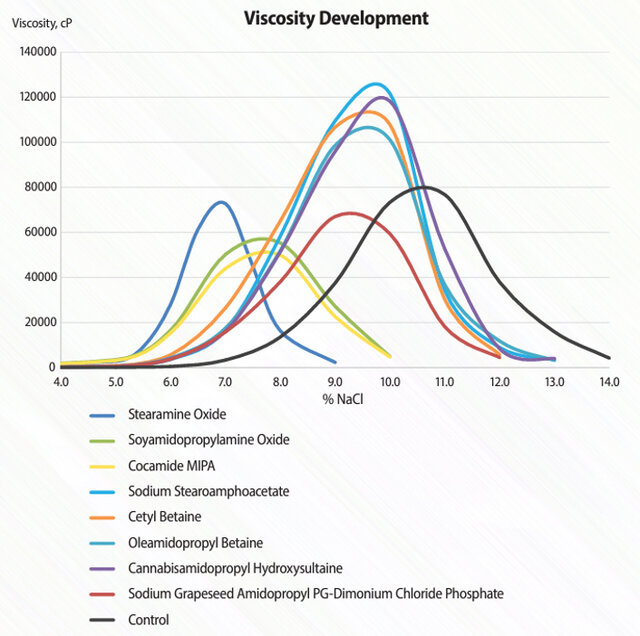
Table 3.
B. Foam Performance
Due to higher solution viscosity, long chain surfactants also tend to have improved foam stability. They also have lower inherent foam potential. The impacts of these materials on initial and stable foam were assessed by two different measurement methods, static and dynamic. For static measurements, test solutions of the same formulations of Part A at 1% solids in DI water at 25°C were prepared. Foam height was measured using the standard Ross-Miles test at two intervals: t=0 and t=300 seconds and are shown in Table 4.
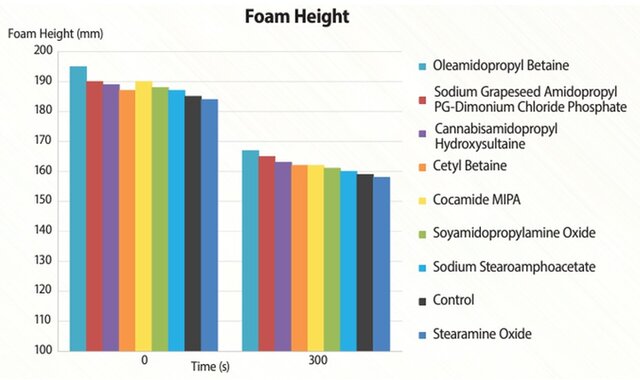
Table 4.
For dynamic measurements of bubble size and structure, test solutions of the same formulations of Part A at 0.05% solids in DI water at 25°C were prepared. Foam structure was analyzed using a Kruss DFA100 dynamic foam analyzer, measuring bubble size and bubble count nearly continuously over time, from the foam generation phase to 5 minutes after initiating foam generation as shown in Table 5. As bubble count increases relative to overall foam height, denser foam is observed, with fewer large bubbles. Maintaining a high bubble count is indicative of a lower propensity for bubble coalescence or breakage.
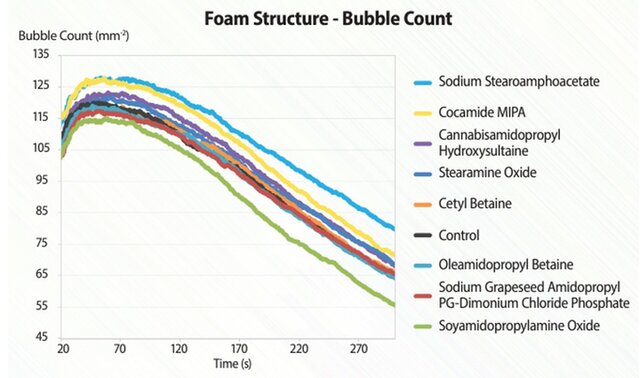
Table 5.
C. Irritation Potential
Despite their larger size, longer chain surfactants could exhibit increased irritation potential due to increased compatibility with lipids in the extracellular matrix. Although not a perfect proxy for this mechanism of irritation, additional information regarding irritation potential was assessed via a zein test. Zein protein solubility increases with increased denaturization and therefore increased potential for skin irritation. None of the test solutions exhibited an increase in zein solubility, with decreases ranging on a continuum from not significantly different to modest significance in the amphoacetate and amidopropylamine oxide to significantly decreased with Stearamine Oxide as demonstrated in Table 6.
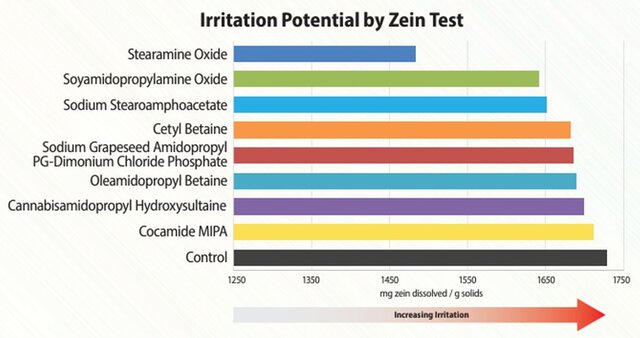
Table 6.
Conclusions
While amphoteric surfactants are well known and frequently used, their application is typically limited to foam stabilization and irritation mitigation of primary anionic surfactants using the coconut derived varieties. The usefulness of long chain amphoterics has now been demonstrated.
For viscosity development all the products tested benefit the formulation by either substantially increasing the overall viscosity development of the system or by substantially reducing the amount of added salt required to achieve maximum viscosity. Sodium Stearoamphoacetate provided the greatest increase in overall viscosity, while Stearamine Oxide was most effective in reducing the amount of added salt required to reach peak viscosity. Notably, the Stearamine Oxide was more effective at reducing salt added than the traditional alkanolamide with negligible reduction in peak viscosity potential.
Assessing foam heights using the Ross-Miles test, despite the lower inherent foam potential of the long chain amphoteric additives, all the systems tested exhibited an increase in foam height at both initial and 300s time intervals. The stabilizing effect was not well observed in the traditional, static test. When evaluating the dynamic data, both positive and negative deviation from the baseline condition can be observed. At the extremes, the addition of Sodium Stearoamphoacetate imparted the greatest degree of stability while Soyamidopropylamine Oxide exhibited the greatest degree of coalescence.
For irritation potential, none of the test solutions exhibited an increase in zein solubility, with decreases ranging on a continuum from not significantly different to modest significance in the amphoacetate and amidopropylamine oxide to significantly decreased with Stearamine Oxide.
Long chain amphoterics have demonstrated themselves to be useful additives, with large impact on viscosity generation in gel cleansers and to a lesser extent improved irritation potential and foam stabilization. Additional testing to assess after-use benefits like skin feel and hair conditioning is warranted, as these additives have previously shown efficacy in both regards.
The Future of Metaverse Personal Care
The future of sensory experiences in the metaverse is a tantalizing frontier poised for remarkable growth and innovation. As technology continues to advance, we can anticipate increasingly lifelike simulations of texture, scent, and other sensory elements, bringing us closer to replicating the tangible sensations of the physical world in the digital realm. Haptic feedback and scent-emitting technologies are likely to become even more sophisticated, offering a truly immersive multisensory experience. Furthermore, as metaverse personal care continues to evolve, it will further blur the lines between virtual and physical beauty, opening up exciting possibilities for customization, personalization, and holistic self-care. To fully embrace this transformative journey, we must stay engaged, explore, and actively participate in shaping the evolving metaverse landscape. As consumers and creators alike, our collective input and imagination will continue to drive the innovation that defines the future of sensory-rich personal care experiences in the metaverse.
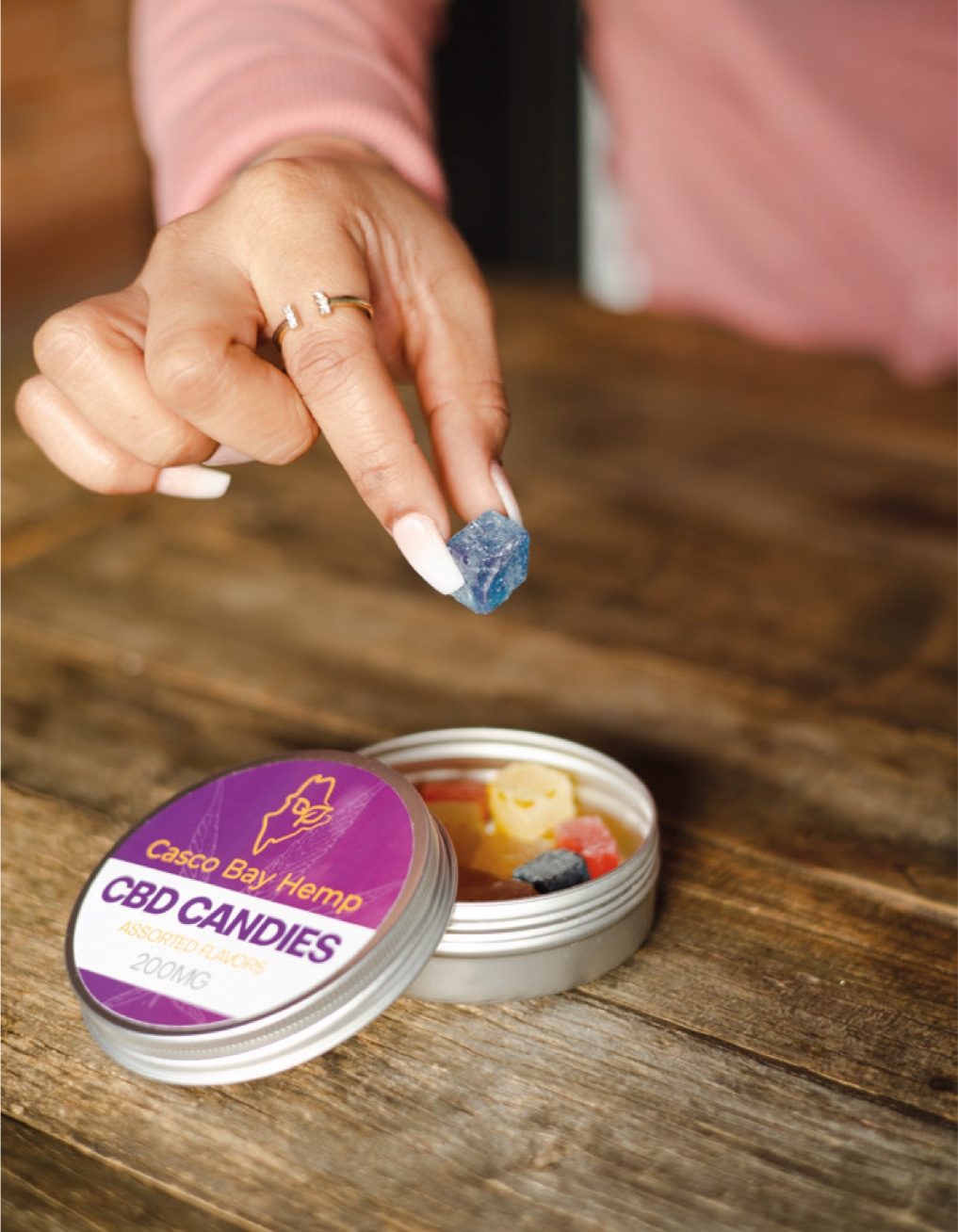
Studies of major depressive disorder have been correlated with reduced Lactobacillus and Bifidobacteria and symptom severity has been correlated to changes in Firmicutes, Actinobacteria, and Bacteriodes. Gut microbiota that contain more butyrate producers have been correlated with improved quality of life (1).
A study in healthy women providing probiotic yogurt for four weeks showed an improvement in emotional responses as measured by brain scans (2). A subsequent study by Mohammadi et al. (3) investigated the impacts of probiotic yogurt and probiotic capsules over 6 weeks and found a significant improvement in depression-anxiety-stress scores in subjects taking the specific strains of probiotics contained in the yogurt or capsules. Other studies with probiotics have indicated improvements in depression scores, anxiety, postpartum depression and mood rating in an elderly population (4-7).
Other studies have indicated a benefit of probiotic supplementation in alleviating symptoms of stress. In particular, researchers have looked at stress in students as they prepared for exams, while also evaluating other health indicators such as flu and cold symptoms (1). In healthy people, there is an indication that probiotic supplementation may help to maintain memory function under conditions of acute stress.
References and notes
- Sparkes, M. (2021). What is a metaverse.
- Woo, J. H., & Kim, S. I. (2020). A study on User experience of Virtual Beauty Makeup Applications. Journal of Digital Convergence, 18(11), 459-464.
- Spence, C. (2022). Multisensory contributions to affective touch. Current Opinion in Behavioral Sciences, 43, 40-45.
- Crofton, E. C., Botinestean, C., Fenelon, M., & Gallagher, E. (2019). Potential applications for virtual and augmented reality technologies in sensory science. Innovative Food Science & Emerging Technologies, 56, 102178.
- Zhang, T., Wang, W. Y. C., Cao, L., & Wang, Y. (2019). The role of virtual try-on technology in online purchase decision from consumers’ aspect. Internet Research, 29(3), 529-551.
- Panagiotakopoulos, D., Marentakis, G., Metzitakos, R., Deliyannis, I., & Dedes, F. (2022). Digital scent technology: Toward the internet of senses and the metaverse. IT Professional, 24(3), 52-59.


